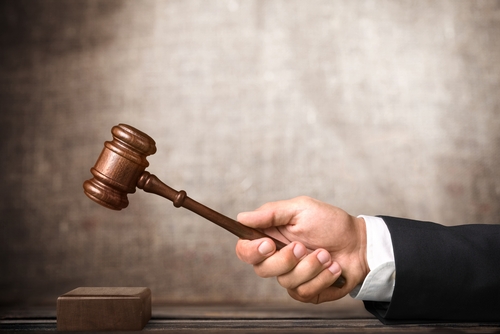USPTO Publishes Updated Subject Matter Eligibility Guidance Focusing on AI | McDonnell Boehnen Hulbert & Berghoff LLP
As required by President Biden’s Executive Order 14110 (“Safe, Secure, and Trustworthy Development and Use of Artificial Intelligence”), the U.S. Patent and Trademark Office has published an update to its subject matter eligibility guidance for examiners regarding inventions employing artificial intelligence (AI). As this is the first update to the USPTO’s subject matter eligibility guidance in almost five years, there was some hope that it would address stakeholders’ long-held concerns. These include the difficulty of crafting claims and a specification directed to an invention that incorporates AI, especially in view of the dramatic disparity in how examiners apply the law in view of the USPTO’s previous guidance.
However, the updated guidance is remarkably non-substantive at best, and at worst appears to take the position that advances in AI and uses of AI are ineligible unless they are implemented in specific hardware circuitry or cause a significant change to the state of an ancillary system. Moreover, the updated guidance largely reads as general eligibly guidance with few actual AI-specific considerations.
Indeed, the updated guidance makes it painfully clear that it (like the USPTO’s previous guidance on the topic) “does not create any right or benefit, substantive or procedural, enforceable by any party against the USPTO.” In other words, examiners are free to ignore the updated guidance as they see fit, which is how examiners have approached the USPTO’s previous subject matter eligibility guidance over the last decade.
In any event, it is not until the halfway point of the updated guidance that it addresses the USPTO’s currently eligibility test. In particular, the updated guidance focuses on Step 2A, prong one (determining whether a claim recites a judicial exception) and step 2A, prong two (determining whether the claim integrates the recited judicial exception into a practical application of the exception). Unfortunately, the USPTO largely employs hypothetical examples in doing so.
Regarding Step 2A, prong one, the USPTO reminds us that “USPTO personnel must draw a distinction between a claim that ‘recites’ an abstract idea . . . and one that merely involves, or is based on, an abstract idea.” In the former case, the claim requires further eligibility analysis and in the latter case the claim is eligible.
The USPTO sets forth three hypothetical examples of claims that do not recite an abstract idea: (i) custom and specific circuits designed to implement arrays of neurons and synaptic weights, (ii) a processor, livestock herd monitor, and transmitter collectively arranged for monitoring health and activity in a herd of dairy livestock animals, and a “treatment method comprising administering rapamycin to a patient identified as having Nephritic Autoimmune Syndrome Type 3.” Notably, only the first of these examples even relates to AI.
The USPTO goes on to state that examiners should identify specific claim limitations that fall within the three groupings of abstract ideas: mathematical concepts, certain methods of organizing human activity, and mental processes. This leads to the rather absurd result that more specific recitations in a claim (which are encouraged by a large number of Federal Circuit eligibility opinions) can ultimately render a claim ineligible, whereas broader recitations of the same invention (which are discouraged by these Federal Circuit eligibility opinions) can result in a claim being eligible because it does not recite an abstract idea.
Regarding math, the USPTO essentially repeats it’s thin and unworkable distinction between claims that recite mathematical concepts and claims that are based on or involve a mathematical concept. In practice, examiners do not understand this distinction and the USPTO’s terse discussion in the updated guidance suggests that they are not alone. To state what should be obvious, all science and engineering advances involve mathematical concepts in one way or another — a claim that recites “taking the sum of a first output and a second output” should not be subject to more scrutiny than a claim that recites “determining a result based on a first output and a second output.”
The certain methods of organizing human activity category has been viewed expansively by the courts and some examiners to include anything remotely related to human activity.[1] Here, the USPTO relies on three recent Federal Circuit eligibility opinions to flesh out the category. The problem is that all three examples found claims to be ineligible. It would be nice if the USPTO could provide at least a hint of what might not fall within this gaping chasm of a category.
On mental processes, the USPTO continues to apply what can only be considered a legal fiction. In essence, the current practice is that any invention that, even in theory, could be performed by one or more human beings with thought, pencil and paper, or other tools, is a mental process even if it would take millions of years to obtain a useful result. Indeed, the mental process category encompasses processes that are not performed mentally.
Here, the USPTO at least gives us one example of an invention that (in its view) does not recite a mental process (“a specific, hardware-based RFID serial number data structure [that is] uniquely encoded”). However, when compared to the other examples that do recite a mental process (e.g., “the collection of information from various sources and understanding the meaning of that information”), the USPTO appears to be slicing the bacon transparently thin.[2]
Moving on to Step 2A, prong two, the USPTO reiterates that examiners should determine whether “there are any additional elements recited in the claim beyond the judicial exception(s), and [evaluate] those additional elements individually and in combination to determine whether they integrate the exception into a practical application of that exception.” Despite the USPTO’s reminder that claims are to be considered “as a whole” in this inquiry, such language is, in practice, a paper tiger. Neither the USPTO nor the courts have ever explained what it means to consider claims as a whole, and both have routinely considered claims piecemeal while contending that they are actually considering claims as a whole.
There are three ways to find a claim non-abstract under Step 2A, prong two — where the claim (i) improves the functioning of a computer, (ii) improves another technology or technical field, or (iii) is meaningfully limited to a particular technological environment. But none of these have been defined in the case law, much less clearly defined. The USPTO notes that specific solutions to specific problems are more likely to be eligible, but provides little insight that fleshes out this notion. Instead, the USPTO again falls back on case law examples.
These examples demonstrate that an eligible invention may look ineligible if you tilt your head three degrees to the left and vice-versa. For example, a very specifically-worded claim for determining haplotype phase based on pedigree data in human genetic sequences was an improvement over prior attempts to do so, but not a “technical” improvement because the entire claim was putatively a mathematical process that ran on general-purpose computers.
While the USPTO touted the claims of McRO, Inc. v. Bandai Namco Games America Inc. as an example of eligibility (which it is despite a lot of math being calculated by a general-purpose computer driving the thrust of the claimed invention), in practice it is rare that making an analogy to these claims will sway an examiner. Instead (tilting their heads three degrees to the left), examiners typically conclude that any claim similar to McRO actually recites an ineligible abstract idea executing atop a non-specific chunk of silicon.[3] In other words, there is little or no appreciable difference between the haplotype claim and those of McRO despite one being eligible and the other not.
Toward the very end of the updated guidance, the USPTO addresses AI-assisted inventions. It states:
For the subject matter eligibility analysis under 35 U.S.C. 101, whether an invention was created with the assistance of AI is not a consideration in the application of the Alice/Mayo test and USPTO eligibility guidance and should not prevent USPTO personnel from determining that a claim is subject matter eligible. In other words, how an invention is developed is not relevant to the subject matter eligibility inquiry.
Thus, the words of the claim matter but the use of AI in developing the underlying invention does not. Aside from this clear statement, the updated guidance is cagey in general and surprisingly thin on AI-specific content.[4]
Practitioners have looked forward to iterations of the USPTO’s subject matter eligibly guidance to add clarity and expedite prosecution. After a decade of such guidance, it is clear that the USPTO’s example-based approach has failed. The chosen examples do not clarify the murky principles and distinctions that the words of the guidance set forth. Moreover, the USPTO’s reasoning regarding these examples is contradictory, muddled, opaque, and ultimately not helpful. The greatest evidence for this is how different examiners apply the guidance in dramatically different ways.
Again, the fault lies with the Federal Circuit’s incoherent parade of patent eligibility horribles masquerading as judicial decisions. But instead of acknowledging that the emperor is stark raving naked, the USPTO once again tries to pretend otherwise.
It is time to stop.
[1] One of my favorite examples is the examiner I spoke to who insisted that fully-automated navigation of a self-driving vehicle was a method of organizing human activity because the goal of the invention was to deliver people from point A to point B.
[2] Credit for this confusion should be placed at the feet of the Federal Circuit, the decisions of which these examples are based.
[3] A relevant definition of “analogy” in the American Heritage Dictionary is “[a] form of reasoning based on the assumption that if two things are known to be alike in some respects, then they are probably alike in other respects.” Too many examiners seem to think that, to be analogous, two things must be exactly the same.
[4] The USPTO has released three new sets of example claims to support the guidance. They were not specifically addressed herein and may be discussed in a subsequent article. In short, they do not provide enough further insight to render the updated guidance particularly helpful.
[View source.]






